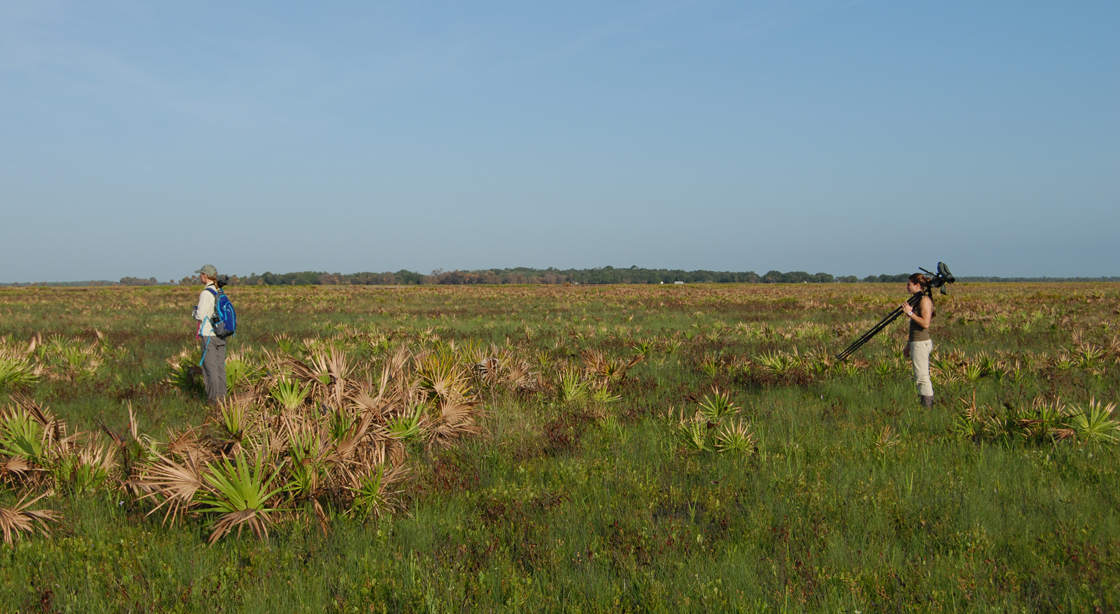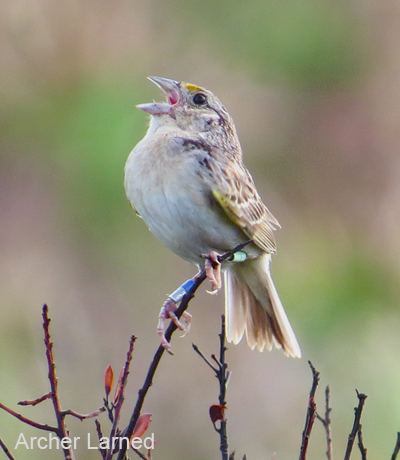Funding
We are currently funded by the U. S. Fish & Wildlife Service to apply our experience with Grasshopper Sparrow behavioral ecology and breeding biology to conservation and recovery efforts involving the endangered Florida subspecies, Ammodramus savannarum floridanus. To this end we are assisting with: (1) ecological studies and acoustic monitoring in central Florida, and (2) captive breeding efforts in the laboratory using the eastern subspecies, Ammodramus savannarum pratensis, as a surrogate.
Florida field work
Song studies with Grasshopper Sparrows have suggested that patterning of their two song types is indicative of pairing and breeding status, thus informing surveys of remaining birds in a critical way, as females do not sing and are often difficult to see. We are also assisting in nest finding, territory mapping, and vegetation surveys, as well as long term monitoring with autonomous recording units (ARUs). This work helps provide crucial information for the conservation biology of the bird, as well as contributing to our understanding of variation in song and breeding behavior across this species' range. Of the three principally North American subspecies, A. s. floridanus is the only sedentary one, and thus a unique and interesting bird that provides an important contrast to the migratory subspecies on the continent.
Captive breeding
We are working to establish a protocol for successful captive breeding of Grasshopper Sparrows in the laboratory. These wild birds are challenging to keep and breed, and our studies are providing important information to the U. S. Fish & Wildlife Service for any future captive breeding that will take place with the Florida subspecies. We work in collaboration with the Florida facility that would undertake this breeding program, the Rare Species Conservatory Foundation. Captive breeding in the lab also provides us with the opportunity to explore responses to song by females at specific points in their breeding cycle using operant choice tests. Thus, these breeding efforts afford us the opportunity to develop a better understanding of the unusual song and singing patterns of this fascinating species. |


